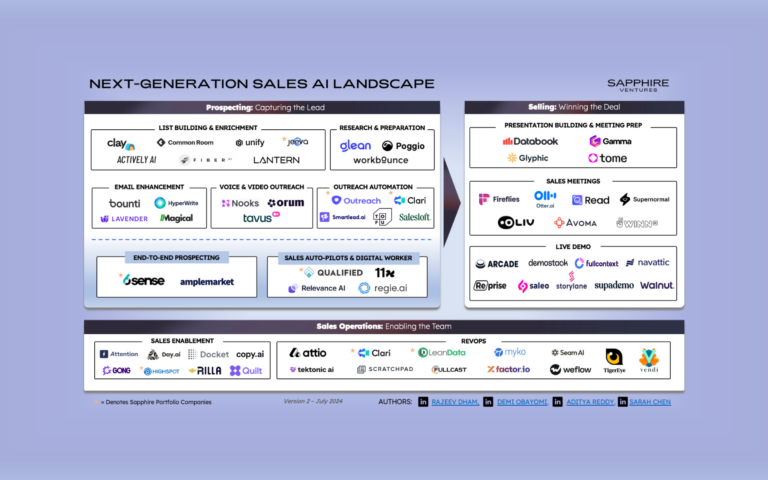In the first part of our two-part ‘Metrics that Matter’ series, I spent time speaking to the importance of building the foundation for your data. I am a firm believer that if you want your data strategy to scale, you have to invest in the basic tenants early and continue to prioritize them as you grow.
Once you have the foundation in place, focus is your next best friend when it comes to the KPIs that are most relevant to your organization’s health and success.
Ultimately, there are only a select few that you need to prioritize to drive focus in my opinion. I categorize it into three buckets: Strategy, Plan & Execution.
The Strategy
% TAM/SAM/SOM Capture:
I had a CRO I highly respect once share with me that he believed our ability to understand our Target Addressable Market (TAM) capture down to the lowest node (region, segment, etc.) was the most meaningful intelligence our multi-billion dollar business had. I agree wholeheartedly.
I believe too many companies start and end their TAM/SAM/SOM assessment in the investor pitch deck. The ones that can then translate it to actual scorecards that measure sales revenue capture against available markets can be the ones that unlock massive opportunity, efficiently.
Imagine knowing your overall market opportunity (TAM) down to the region and segment, then layering on your service addressable opportunity (SAM), that’s who your product can be sold to today. And finally, tagging and understanding what subset of that SAM you have captured (revenue) or can capture (SOM) based on your existing organization design and resourcing. This sort of scorecard can change the way you grow your business.
To get started, I suggest taking the time to leverage curated databases to populate your CRM with your SAM/SOM and map it against your TAM. Build a dashboard that tracks your level of penetration (both dollar and count) against your TAM/SAM/SOM, and you’ll be surprised by how easy it is to make difficult resourcing decisions, define product roadmaps, and excite and engage your employees by being able to show the huge opportunity ahead.
Seller Productivity:
I define seller productivity as the total bookings per productive sales rep. It is a simple calculation but in my opinion the most meaningful measure of sustainable success in a Revenue organization.
In the multiple stops I’ve had at hypergrowth B2B technology companies, the journey around productivity was very similar. Early days (post product market fit), productivity would spike given the massive opportunity (greenfield) available, low number of sellers and because sellers could ‘cherry pick’ the most meaningful deals. As I went further in the growth journey and added capacity (number of sellers) to an organization and we started selling to laggards, inevitably productivity started to plateau. When your next dollar is incrementally harder to capture, then in my opinion, the real growth opportunity surfaces.
Focusing on productivity early on can allow you to build a meaningful and efficient growth muscle. Instead of just throwing ‘people at the problem’, productivity metrics force organizations to focus on enabling reps effectively (time to ramp), driving efficiency through technology and process (time to sell), and creative messaging/brand development (at bats).
Ultimately, it’s a people-centric way to invest, win and grow.
The Plan
Net New ARR:
I believe every organization needs a ‘North Star’ metric to anchor around. A figure that is comprehensive, easy for all functions to connect to and meaningful, both internally and externally.
While it may seem logical to anchor around Total Contract Value (TCV) as an all-encompassing metric, it can be a misleading KPI for SaaS companies. Consider two example deals, one at a 100K, one year term length, while the other is a 60K, two year term length at a TCV of 120K. While the TCV is greater in the second example, if you are a SaaS company with a tenable gross retention rate, the first deal is much more valuable to your organization.
With that in mind, the most effective ‘North Star’ that I have seen for a company to anchor around is Net New ARR, which is defined as New ARR from new customers plus Expansion ARR from existing customers–Churned ARR.
If there is one metric to rule them all, I believe this is it.
Gross Revenue Retention (GRR %):
Defined as the percent of renewable dollars captured in a given period of time, gross retention can be a fundamental KPI for a revenue organization to manage by.
In practice, I’ve found that gross retention can get deprioritized in revenue organizations. They are usually easier dollars to capture (renewals) compared to new logo or expansion dollars, and require a more tactical resource to support. With that as the backdrop, I’ve seen companies over-rotate on new and expansion, and take their eye off the ball with retention.
Here’s why this is a missed opportunity for most companies: The greater the size of your renewal pie, the more significant the implication of a degreating gross retention number to a company’s bottom line. As an organization grows and becomes more customer centric vs. new logo centric, even a small impact to gross retention can counteract any new and expansion dollars you generate.
Beyond that, I believe retention is the foundation for a healthy expansion, and is the most meaningful measure of product health and stickiness in an organization. If you aren’t focused on this metric as a core KPI, you’re missing out on building for the future.
Net Revenue Retention (NRR %):
Some of the best revenue organizations start by understanding how their buyers want to buy before training their salespeople how and what to sell. Taking the time to define a customer journey is at the crux of this approach.
In my opinion, Net Retention (NRR %) is the metric that represents how a customer is navigating their journey with your product, all the way from purchase to adoption to renewal to expansion. Net Retention is regularly calculated as your (Renewable Dollars + Cohorted Expansion Dollars)/Renewable Dollars.
Without a focus on this KPI, companies can get over-indexed on an insular approach to sales. To help illustrate, I’ll share a personal example. I’ve been part of a large organization where a seller oversold their prospect to the tune of a seven figure new logo deal. At first blush, it was one of our largest new logos in company history, and viewed as a great success. Not to mention the sales rep on the deal was delighted at the massive check coming his way.
Flash forward one year later, the same company we sold our product to never adopted the product, bought too much of what we had to offer and summarily churned with us. This led to a massive loss of lifetime value.
This was a big lesson learned for many of us in the revenue organization, including sales, customer success and so on. We failed to manage Net Retention as one of our primary KPIs and in the end would pay for it over time.
You may wonder, what does best-in-class retention look like from a KPI standpoint. Well, there is no clear cut answer because it really varies by size and scale (at the earlier stages of a startup’s growth, it’s much easier to drive high retention), but in general, I believe 125% and above is a healthy organizational measurement to achieve at late stages.
Seller Attainment & Participation:
One of the first things I like to do when I join a new revenue organization is to get access to the seller attainment against target incentive compensation (TIC) and seller participation rates. In my experience, this is the quickest and easiest way to diagnose what may ail a revenue organization.
The participation rate (i.e. % of sellers over 100% attainment), median attainment and overall shape of your attainment curve can tell you if you have parity in territory and segment design and if your quotas are set effectively given macro factors and internal execution.
If you haven’t already, put a cadence in place to evaluate this metric consistently as one of your primary KPIs. Best in class companies will have ~60% of sellers at or above plan, with the attainment curve being shaped as a bell curve. Also, be sure to be mindful of what your excellence point is and how that may be growing or shrinking over time (i.e. what attainment is expected from your top 10% of sellers).
Execution
Pipeline Generation (Gross/Net):
In my opinion, pipeline is oxygen for a revenue organization, and easily the best correlation to revenue success. Depending on your GTM focus, some of the most successful organizations will build pipeline for multiple quarters out and manage it methodically through a structured sales process with clear milestones, deliverables and go/no go decisions.
When it comes to managing pipeline generation as a KPI, I like to consider two methods: gross and net.
- Gross Pipeline is defined as new pipeline dollars added into the CRM.
- Net Pipeline is defined as new pipeline dollars added + pipeline change of existing opportunities (closed won/lost, amount decrease/increase, etc.).
Both are relevant, but can be most valuable when considered in concert with one another. Gross pipeline represents the effort and energy your revenue team is placing in creating new opportunities for revenue. Whereas net pipeline takes into account the ‘puts and takes’ of the existing pipeline in hand, and rewards the growing size of existing deals and avoiding slipped deals.
As a benchmark, I believe net pipeline is the best indicator of overall pipeline health and should typically be anywhere from 4x or higher for the start of a given quarter.
Pipeline Maturation:
Pipeline can be one of the hardest things to quantify and measure successfully. By nature, it changes constantly in size and shape, and is the easiest metric to game by a seller. It can also be managed differently by every seller, irrespective of having a clear and defined sales process.
I may be cheating a little here by calling this one a KPI, but just as important as knowing how much pipeline you have, it’s critical to understand how that pipeline is (or isn’t) maturing.
Some companies have tried to determine pipeline health in creative ways, but in my opinion, the best determinant of a healthy pipeline is size (ASP), length (sales cycle) and confidence (close rate). If you can monitor these three across your deals consistently versus your planning assumptions, you can get a sense of where and how to tune your organization.
Forecast Accuracy:
Forecast accuracy can be one of those KPIs that becomes exceptionally more valuable the more accurate it is and the larger a company becomes. I’ve had the fortunate opportunity to be part of three companies that have gone public. In each instance, our ability to make this leap was dependent upon how predictable our revenue engine was, across a multi-quarter period. The moment we were able to hone in on our forecast accuracy, that served as the green light from revenue that we had the discipline to manage as a public company.
Even prior to something as monumental as a public event, maintaining and managing great forecast accuracy for current and out quarters (Q+1) is critical. It imbues confidence in the business and allows for more intentional investment.
Great in quarter forecast accuracy is +/- 3% and out quarter visibility is +/- 5%. Down market, I believe you should rely primarily on data-driven forecasting with seller forecasts as a pressure test. Up market, I believe the focus should be on the seller call, backed up by a ‘bottoms up’ forecast that substantiates the call.
In my opinion, there are a plethora of other KPIs that you can use to manage your business. And because every business is different, I am not advocating that you ignore those that I haven’t highlighted here entirely. Having said that, those in this post are not only table stakes for any business, but I have seen them work, time and time again.
My advice: lead with these KPIs and build from there.
If you’re a startup revenue leader, and have any questions about how to deploy and measure against KPIs that will matter most to your business, please reach out to me at: [email protected].
Legal disclaimer
Nothing presented within this article is intended to constitute investment advice, and under no circumstances should any information provided herein be used or considered as an offer to sell or a solicitation of an offer to buy an interest in any investment fund managed by Sapphire Ventures (“Sapphire”). Information provided reflects Sapphires’ views as of a time, whereby such views are subject to change at any point and Sapphire shall not be obligated to provide notice of any change. Companies mentioned in this article are a representative sample of portfolio companies in which Sapphire has invested in which the author believes such companies fit the objective criteria stated in commentary, which do not reflect all investments made by Sapphire. A complete alphabetical list of Sapphire’s investments made by its direct growth and sports investing strategies is available here. No assumptions should be made that investments listed above were or will be profitable. Due to various risks and uncertainties, actual events, results or the actual experience may differ materially from those reflected or contemplated in these statements. Nothing contained in this article may be relied upon as a guarantee or assurance as to the future success of any particular company. Past performance is not indicative of future results.



